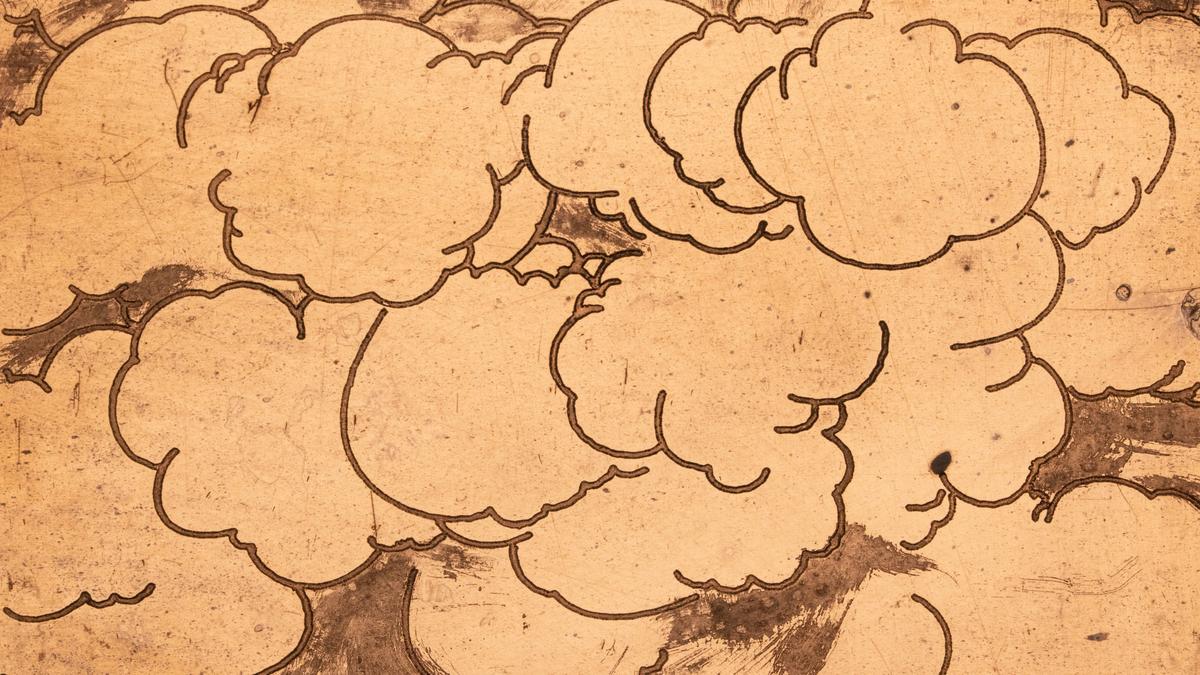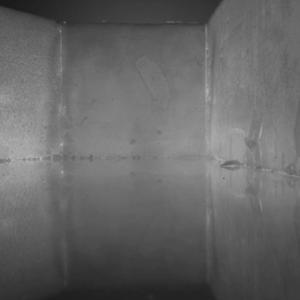Taking into account moving image’s traditional emphasis on the visual, Leap to the Place of Two Pools presents five new works by artists who resist or relinquish ocularcentrism through multisensorial knowledge systems. In both making and viewing, how to honour what cannot be seen? How can surety and attachment to the two pools—the eyes—leap and transmigrate to other sensing sites within and beyond the boundaries of our bodies?
Sonya Lacey’s silent stop-frame animation, constructed from acid-etched copper plates, cites the cloud-like formation of scene changes used in historical animated productions. Transition sequence for a dream or fight revels in this visual device that prevents us from seeing, while proposing the ongoing unknown as a hospitable, generative state. In fugue notes, Selina Ershadi’s original vision for a film is ultimately supplanted by its notes. In deep shadow and inky darkness, a voiceover unfolds, drawing connections between eroding autobiographical memory and the failed image. James Tapsell-Kururangi’s work explores expectations of the visual representation of whakapapa and tikanga. As a form of self-portraiture, James documents the artist’s candid performance in Te Rotorua-nui-a-Kahumatamomoe (Lake Rotorua). Kah Bee Chow turns to archival footage to process her father’s passing. In Fronds, focusing on the walled enclosure of her family home, his garden becomes a mnemonic device and the camera a technology that enacts a form of touch. In the absence of a conventional protagonist, grief provokes a rhythm of sensual close-ups and textual interludes. Kite’s Makȟóčhe Kiŋ Oíč’iwa (The Land Paints Itself) pairs technologies of dreaming and AI to imagine Indigenous futures patterned across unceded land, marked by stones whose own language emerges as a conduit to multivocal storytelling.
Leap to the Place of Two Pools is the latest edition of CIRCUIT’s ongoing series in which an international curator is engaged to develop a programme of new artist commissions based in the moving image. Its title is adapted in dialogue with Anna Tsing, citing her translation of Meratus Dayak Putir performance.(1) Through poetry, the shaman passes the two gleaming pools, guarded by eyelash swords, into the vast landscape of the body, where the world is expansive and healing is possible. With this offering in mind, these works emerge, variably sensing the unseeable known and unknown realms of oral history, memory and dreams.
Curated by Erin Robideaux Gleeson and commissioned by CIRCUIT Artist Moving Image.
Previous project curators have been based in Europe, Asia and North America, and the resulting commissions have shown extensively in venues in Aotearoa and internationally. The series will be celebrated in a forthcoming publication that documents the 41 artworks commissioned over 2015–25, entitled CIRCUIT: Dialogues in Artist Moving Image, which will launch in autumn 2025.
(1) Anna Lowenhaupt Tsing, 'Beyond the Boundary of the Skin,' in The Realm of the Diamond Queen. Princeton, N.J.: Princeton University Press, 1993.

